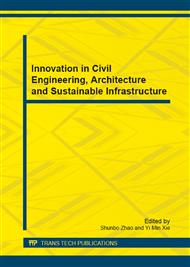p.701
p.705
p.709
p.714
p.719
p.723
p.728
p.733
p.738
Dynamic Analysis of Bridge-Approach Embankment Transition Segment
Abstract:
Dynamic responses of coupled system were analyzed when the speed of train was 350km/h and the transition was filled with graded broken stones mixed 5% cement. Results indicate that setting form of bridge-approach embankment section has little effect on dynamic responses, thus designers can choose it on account of practical circumstances. Based on the study from vehicle-track dynamics, we suggest that the coefficient of subgrade reaction (K30) should be greater than 190MPa within 0-5m zone behind abutment and be greater than 150MPa in other zones.
Info:
Periodical:
Pages:
719-722
Citation:
Online since:
November 2012
Authors:
Price:
Сopyright:
© 2012 Trans Tech Publications Ltd. All Rights Reserved
Share:
Citation:


